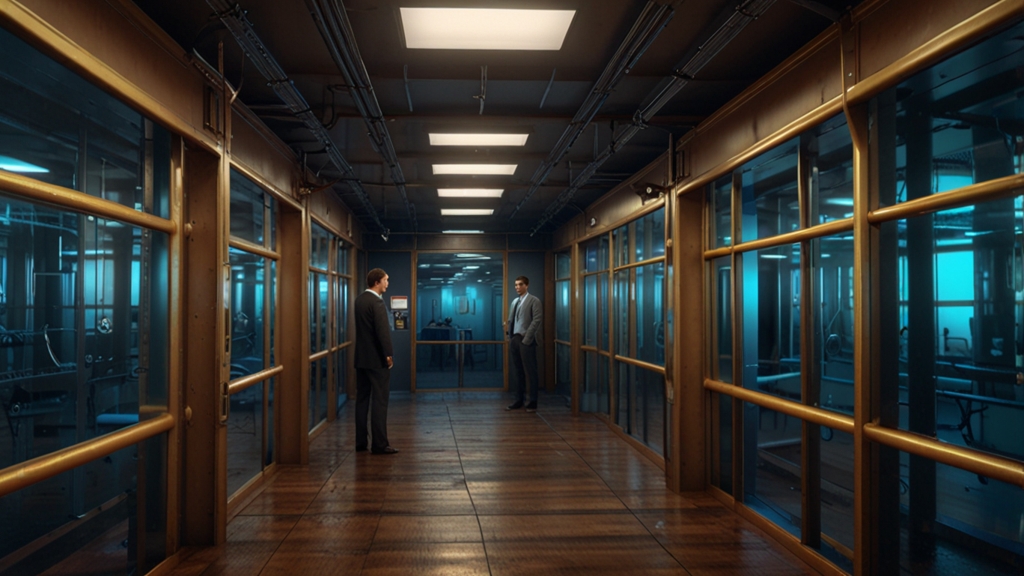Unearthing Prophets: Archaeological Discoveries That Astound
Throughout history, prophets have been revered as messengers of divine wisdom and foreseers of future events. These enigmatic figures have left an indelible mark on the cultural and spiritual landscapes of civilizations worldwide. Recent archaeological discoveries have provided fascinating glimpses into the lives and times of some of these prophetic figures, offering a compelling intersection of faith, history, and science.
The Prophet Isaiah: A Seal of Authenticity
One of the most compelling discoveries related to prophetic figures is the bulla, or seal impression, that belonged to the prophet Isaiah. Unearthed in 2015 in Jerusalem, this tiny clay artifact measures a mere half-inch in diameter but carries immense significance. The seal bears the inscription "Isaiah," alongside partial script that some experts interpret as "prophet." If verified, this discovery would be the first extrabiblical evidence linking a physical object directly to the renowned biblical prophet who authored the Book of Isaiah.
The Dead Sea Scrolls: Revelations of Essenes
The discovery of the Dead Sea Scrolls in the Qumran caves near the Dead Sea between 1946 and 1956 is perhaps one of the most monumental in archaeological history. These scrolls, which include texts from the Hebrew Bible, date back to the Second Temple period (530 BCE – 70 CE). Among these ancient manuscripts is the Isaiah Scroll, one of the oldest and most complete biblical texts ever found. Researchers believe that the scrolls were hidden by the Essenes, a Jewish sect reputed to follow prophetic traditions, thus offering a rich vein of historical and theological insights.
"The Dead Sea Scrolls have transformed our understanding of the Bible and the religious climate during the Second Temple period," says Dr. Esther Roth, an expert in ancient scriptures.
Nebi Daniel: The Tomb of Daniel the Prophet
In southwestern Iran, in a city called Susa, stands a mausoleum believed to house the remains of the prophet Daniel. According to multiple historical sources, Daniel, famed for his prophecies and as a dream interpreter in the court of Babylonian kings, was buried at this site. The tomb's intricate design and the reverence bestowed upon it by both Jews and Muslims further amplify the lasting impact of this prophetic figure. Archaeological studies at the site have revealed artifacts and structures dating back to different historical periods, thus indicating its longstanding significance.
The Lost Prophets of Zoroastrianism
While prophets are often associated with the Abrahamic faiths, Zoroastrianism, one of the world's oldest monotheistic religions, also boasts a rich prophetic tradition. Recent excavations in Iran and Central Asia have uncovered vestiges of Zoroastrian fire temples and priestly artefacts, providing clues about ancient rituals and teachings. These discoveries shed light on the lives of Zoroastrian seers like Zoroaster (Zarathustra), who is considered the founder of the faith. His hymns and scriptures, known as the Gathas, continue to be a testament to his profound spiritual insights.
"Each artifact unearthed offers a glimpse into the spiritual and daily lives of ancient peoples, illuminating the foresight and influence of their prophetic leaders," comments Dr. Ali Reza Sheikholeslami, an authority on Ancient Near Eastern cultures.
Sybil Prophecies: Oracles and Divination
Another fascinating area of discovery pertains to the Sybil oracles of ancient Greece and Rome. These prophetesses were reputed to possess the ability to foresee the future and were often consulted during times of political or social crisis. Recent archaeological digs at sites such as Delphi have uncovered temple ruins, votive offerings, and inscriptions that paint a vivid picture of the oracles' influence. Notably, the Sybil's prophecies were often collected and compiled into what are known as the Sibylline Books, fragments of which have been discovered and studied extensively.
Concluding Thoughts: The Timeless Legacy of Prophets
Archaeological discoveries related to prophets not only affirm their historical existence but also deepen our understanding of their profound impact on faith and culture. These findings bridge the gap between ancient wisdom and modern scholarship, allowing us to appreciate the enduring legacy of these extraordinary individuals. As new technologies and methods of excavation continue to evolve, we can anticipate even more revelations that will further enhance our understanding of these timeless figures.
"With every dig and discovery, we inch closer to untangling the mysteries of the prophetic past, enriching our knowledge and appreciation of human history and spirituality," says Dr. Sarah Kramer, an eminent archaeologist specializing in ancient religions.












